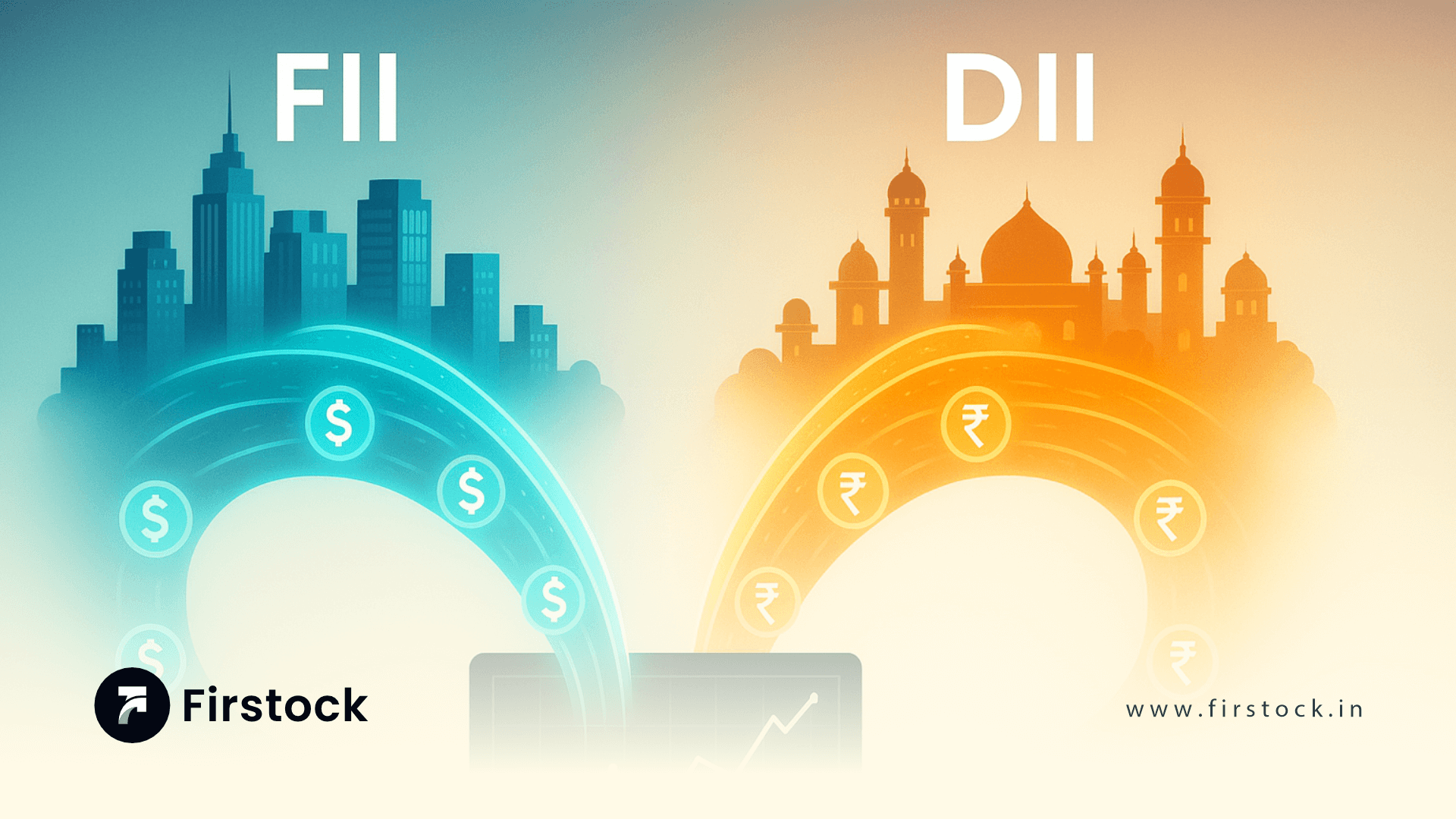The Role of Foreign Institutional Investors (FIIs) in Supporting Indian Markets in 2025

Foreign Institutional Investors (FIIs) have long played a crucial role in shaping the Indian stock market. Their investments bring in significant capital, enhance liquidity, and influence market valuations. However, 2025 is witnessing an interesting shift in the dynamics between FIIs and Domestic Institutional Investors (DIIs), which is reshaping how Indian markets behave.
FIIs: What They Do and Why They Matter
FIIs are entities like foreign mutual funds, pension funds, and hedge funds that invest in Indian equities and debt markets. Their main roles include:
Enhancing Market Liquidity:
FIIs bring large capital inflows, making it easier to buy and sell stocks and helping with efficient price discovery.
Driving Stock Prices:
When FIIs buy shares, especially in blue-chip and high-growth sectors, stock prices tend to rise. Conversely, their sudden exit can cause market corrections.
Influencing Market Trends:
FIIs often invest in sectors linked to global trade, such as IT, banking, and infrastructure, signaling confidence or caution to other investors.
Supporting Economic Growth:
Their investments in corporate bonds and infrastructure projects help fuel industrial expansion and job creation.
Improving Corporate Governance:
Companies with high FII ownership tend to adopt better transparency and compliance standards to attract and retain foreign capital.
The Trend: Strong Domestic Flows vs. FII Outflows
In recent years, the Indian market has seen a notable shift:
Domestic Institutional Investors (DIIs) Are Rising:
For the first time in 2025, DIIs own a slightly larger share of NSE-listed stocks (16.9%) compared to FII/FPIs (16.8%). This is a significant change from 2015 when FIIs dominated with over 21% ownership while DIIs held just about 11%.
Why This Shift?
DIIs, including mutual funds, insurance companies, and pension funds, have been steadily increasing their investments, driven by growing domestic confidence, steady SIP inflows, and supportive policy measures like repo rate cuts. They tend to focus on sectors catering to India’s internal demand, such as financial services, FMCG, defence, and healthcare.
FII Outflows Amid Global Uncertainty:
Despite some inflows in early 2025, FIIs have pulled out a net $14.6 billion in the fiscal year ending March 2025, driven by global risk aversion, slowing earnings growth, and high valuations compared to other emerging markets. However, in May 2025, FIIs turned net buyers again, injecting nearly ₹20,000 crore, encouraged by India’s strong GDP growth, declining inflation, and expectations of US interest rate cuts.
How FIIs’ Inflows Impact Market Valuations and Trading Strategies in 2025
Market Valuations:
FII buying tends to push valuations higher, especially in globally linked sectors. However, stretched valuations can also lead to profit-booking and volatility when FIIs exit.
Sector Rotation:
FIIs often rotate their investments based on global economic cues. For example, in 2025, FIIs favored sectors connected to global trade and exports when optimism about global recovery improved, while DIIs stuck to domestic demand-driven sectors.
Trading Strategies:
Traders and investors watch FII activity closely. Large FII inflows can signal bullish momentum, encouraging buying. Conversely, FII outflows may prompt caution or defensive positioning. Meanwhile, the rise of DIIs provides a stabilizing effect, cushioning markets during FII sell-offs and supporting long-term growth stocks.
In 2025, the Indian stock market is witnessing a historic balance between foreign and domestic institutional investors. While FIIs continue to influence liquidity, valuations, and sector trends, DIIs have emerged as strong market supporters, reflecting growing domestic confidence. Understanding the interplay between these two investor groups is key for traders and investors aiming to navigate the evolving Indian market landscape effectively.
This evolving dynamic suggests that while FIIs remain important for market vibrancy and global integration, the growing strength of DIIs is making Indian markets more resilient and less dependent on foreign capital flows. Traders should monitor both FII and DII movements to gauge market sentiment and adjust strategies accordingly.





